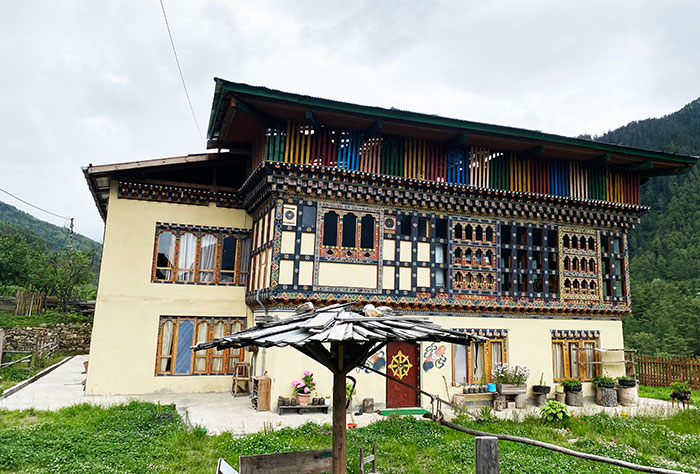Phub Dem | Haa and Paro
Ugyen’s homestay, the 200-year-old primaeval house, has been a magnet for dollar-paying tourists for the past several years. It’s a giant Bhutanese heritage house with a scenic view of Meri Puensum in Haa.
Ugyen and his wife Dolay renovated the house to start a farmhouse, the oldest homestay, in 2012.
The dzongkhag has only four three-star hotels.
Visitors prefer to experience local culture and cuisine, Ugyen said. “They prefer to stay at homestays because it allows for more informal interactions.”
With only around three months of the agricultural season and no alternate source of income, Ugyen ventured into the tourism sector to earn a modest income for his family.
Last year, Ugyen’s homestay hosted tourists all year except for a week or two in winter. “My homestay was packed all the time. Sometimes I had to send my guests to other homestays.”
Then the novel coronavirus struck. Countries began shutting down borders and the last of the tourists hurriedly packed their bags and left.
Within a few days, several bookings that had been made by both international and regional tourists were cancelled.
With the travel restriction on tourists, the travel circuit came to a staggering halt.
Normally, Haa receives more tourists during the Haa summer festival.
Ugyen said this year the peak season passed without any visitors.
When business was good, Ugyen’s family had leased their fields and had reduced yaks and livestock farming. The family earn well from the homestay.
Kinley Wangchuk, a cab driver who runs a homestay has been exploring alternatives to keep the family going. “I’m planning to start poultry farming. We have to survive somehow,” he says.
Kinley Wangchuk anticipated a profitable year due to major social events scheduled in Haa this year. “I had to cancel all the bookings.”
Such anecdotes of financial commotion are unprecedented in the travel and tourism sector.
Paro Penlop Dawa Penjor Heritage Farmhouse in Gaptey which is usually filled with the visitor is vacant today.
After seeing a huge potential in the tourism sector, the whole family engaged in the sector as tourist guides, drivers, and in taking care of the homestay.
The owner, Gado Tshering said: “Forget about international visitors, even locals do not visit. Before Covid-19, many locals came for hot stone baths.”
Homestay owners like Ugyen and Gado Tshering, not just earn for themselves but engage local mask dancers and dancers from drayangs and the village to entertain guests.
The homestays usually earn around Nu 700,000 at the most in a year.
Most homestay owners took loans to renovate their homes and to procure materials to refurbish the place as per the homestay guideline.
Ugyen said that he had to pay a monthly instalment of Nu 29,000. He is worried about the loan repayment as the deferment and instalment waiver end this week.
“I am processing another loan to buy some jersey cows and run a dairy farm to repay the homestay loan.”
Unlike other sectors, the homestays, he said was not receiving any relief fund. “A team came to monitor the situation but nothing has happened so far.”
Meanwhile, homestays in Haa are hopeful to see some local visitors during the Royal Flower Exhibition scheduled in August.
Of 149 homestays in the country, 20 are in Haa and 39 in Paro.
According to Tourism Monitor Report 2019, Paro received 60,706 visitors, the highest from among the dzongkhags and Haa received 5,751 visitors.


